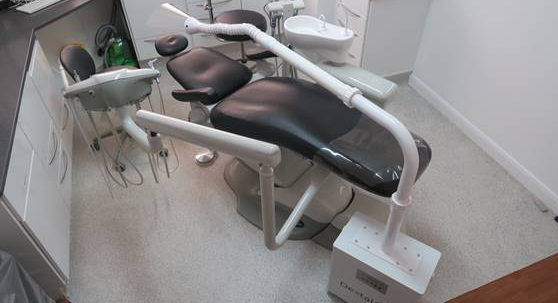Paul Riddick from Vodex shares his views on some of the latest fallow time requirements, and looks at some of these issues from a different perspective – as a qualified engineer with over 35 years’ experience in filtration and extraction systems.
It was great to see new guidelines to allow reduced fallow times and allow dentists and staff to see more patients. But I’d like to look at the issue of fallow time from another perspective.
Calculating air volume
‘General ventilation’ in any surgery is always good practice. It prevents stale air and creates a pleasant working environment, especially so with COVID-19 around.
However, I am sure there are many dentists out there who are not ventilation or filtration specialists. So calculating air changes per hour may lead to some confusion and frustration, with many struggling with the calculations.
With neutral pressure surgeries, opening a window and using unfiltered extractor fans is possibly a low cost ‘quick’ solution.
However, with winter approaching, we may need to consider the potential heat loss from the surgery. And the potential second wave of COVID-19 around the corner.
In an average size room of 4m x 4m x 2.5m (40m3), with 10-12 air changes per hour, one would need extraction flow rates of well over 450m3/hr. That’s 450 cubic metres of warm air loss, every hour!
So, over an eight-hour day, this would easily exceed 4,500m3 of warm air/heat loss. Heat that needs replacing at considerable additional cost.
Some surgeries may have the advantage of a heat exchanger unit fitted, which will reduce this to some extent. But many don’t.
Positioning of external vents
Venting potentially viral, COVID-loaded aerosols externally (suck and chuck it) with no filtration, surely needs questioning.
The argument is: ‘As air passing externally highly dilutes vented air, we do not consider it a risk’.
Yes, once the contaminated air leaves the building via a localised air vent, it should, of course, eventually dilute. But only once the prevailing wind carries it away. However, we don’t know the actual aerosol contamination levels. They will vary in each case.
Many external vents are often at ground level, close to walkways (less than 2m distance), car parks, other buildings or adjacent open windows. That is not even considering potential blowback if the wind is in the opposite direction.
The government constantly reminds us about how the virus is highly contagious. Hence no singing at weddings and funerals or shouting at football matches.
The HSE COSHH guidance (HSG258 section 220) advises all potentially hazardous ‘externally vented air’ must be taken up and discharged well above the highest point of the roof. This makes a lot more sense for the reasons above.
A different approach to ventilation
The virus in aerosol form is airborne for a long time.
We can see that the ePM1, 2.5 and 10 particle levels can rise exponentially, with no form of extraction at all.
During aerosol generating procedures (AGPs), the dentist and other staff are exposed to these potentially contaminated virus-loaded aerosols. Hence the need for fallow time, to allow these aerosols to settle between patients.
However, what if we look at this in a different way?
Air changes and ventilation are all good and advisable. But it’s like sticking a plaster over the problem.
What if we were able to capture the aerosols from AGPs at source? This prevents them from getting airborne in the first place.
Extraction at source
Extraction at source is standard practice in industry.
For example, to remove exposure to solder flux fume and smoke in the electronics industry, we capture the fume before it becomes airborne. This stops it getting into the operator’s breathing zone.
Once the filtration system captures the aerosol, it then filters it through HEPA and carbon filters. This allows clean air to recirculate and avoids any heat loss.
Think of a lab technician working on potential biological hazardous substances. Do we allow them to work in this environment with general ventilation or air changes?
No, of course not. They work in a class II or higher biological safety cabinet. This prevents the substance from becoming airborne and affecting others in the lab.
The extraction solution for dental aerosols
There are a few dedicated filtration systems (such as Dentalair demonstrated below) that will extract AGPs at source.
These easy-to-use filtration systems have become a ‘game changer’ for many dentists, who continue to use them with great success.
Clever design offers a clear barrier for dentists to work as well as extracting aerosols effectively before they become airborne. And with the above-mentioned filtration system, aerosols go through a four-stage filtration system before venting.
This is a logical and relatively low cost extraction solution to AGP exposure.
I believe chief dental officers across the home nations should consider these certified filter systems in the dental industry as an alternative, or certainly in addition, to room air filters and general ventilation.
They could potentially completely remove fallow time, with current testing proving very successfully. Dentalair results are so promising that a leading UK dental university is looking to take it up.
Buyers beware
With the current demand for filtration systems, a number of poor quality ‘copy’ units have suddenly become available.
These contain poor filtration and poor quality seals, which do not meet European EN1822 standards. These are not from reputable extraction professional experts, so buyer beware.
Let’s ‘trap it and zap it’ at the source and control the virus. Even in a post-COVID world.
I hope both CDOs and dental practices consider this effective and holistic solution to both AGPs and COVID-19 exposure.


